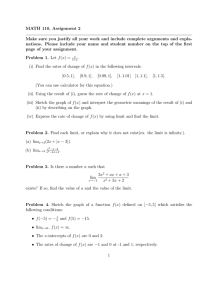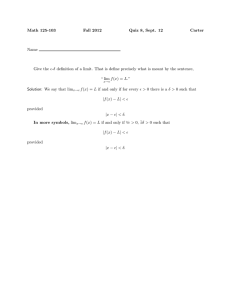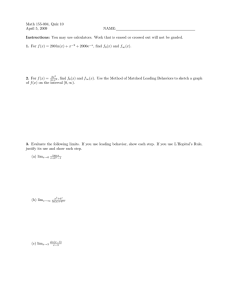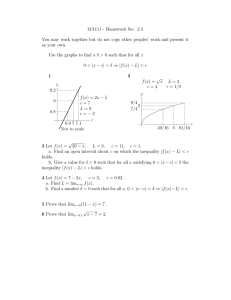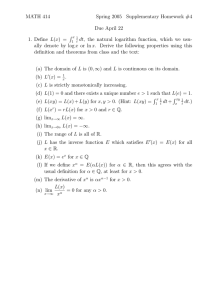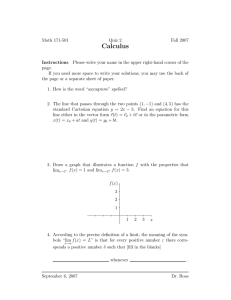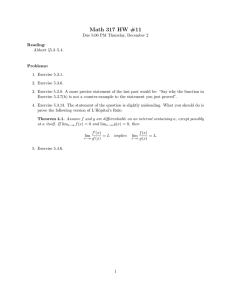Limits at Infinity: Definitions and Explanation
advertisement
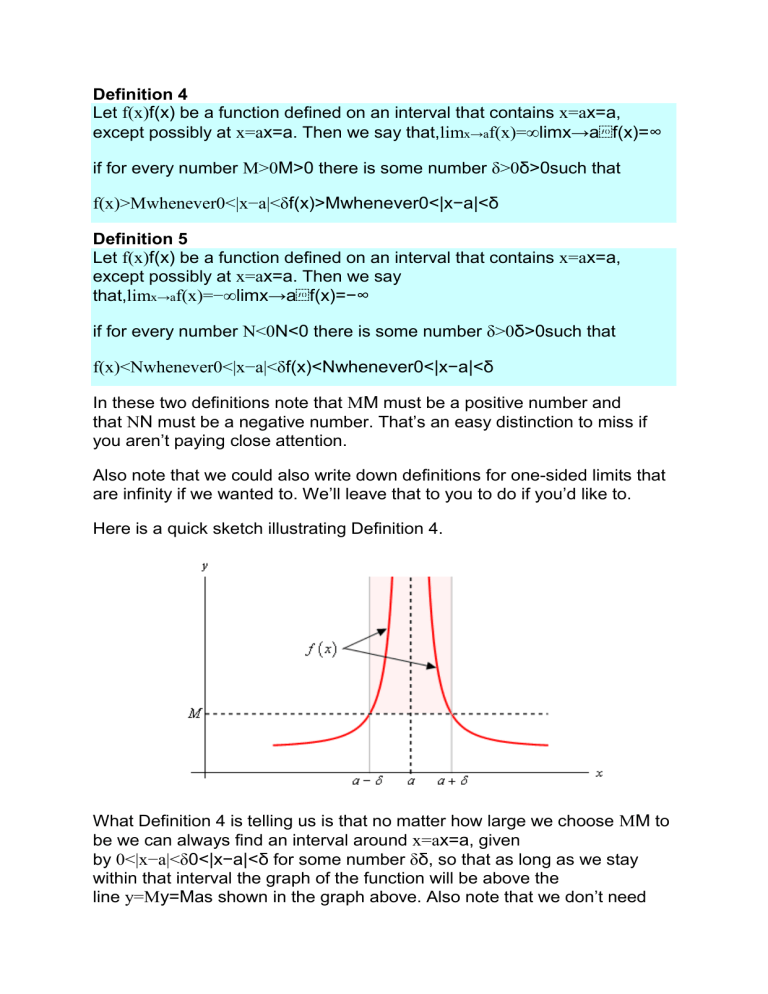
Definition 4 Let f(x)f(x) be a function defined on an interval that contains x=ax=a, except possibly at x=ax=a. Then we say that,limx→af(x)=∞limx→af(x)=∞ if for every number M>0M>0 there is some number δ>0δ>0such that f(x)>Mwhenever0<|x−a|<δf(x)>Mwhenever0<|x−a|<δ Definition 5 Let f(x)f(x) be a function defined on an interval that contains x=ax=a, except possibly at x=ax=a. Then we say that,limx→af(x)=−∞limx→af(x)=−∞ if for every number N<0N<0 there is some number δ>0δ>0such that f(x)<Nwhenever0<|x−a|<δf(x)<Nwhenever0<|x−a|<δ In these two definitions note that MM must be a positive number and that NN must be a negative number. That’s an easy distinction to miss if you aren’t paying close attention. Also note that we could also write down definitions for one-sided limits that are infinity if we wanted to. We’ll leave that to you to do if you’d like to. Here is a quick sketch illustrating Definition 4. What Definition 4 is telling us is that no matter how large we choose MM to be we can always find an interval around x=ax=a, given by 0<|x−a|<δ0<|x−a|<δ for some number δδ, so that as long as we stay within that interval the graph of the function will be above the line y=My=Mas shown in the graph above. Also note that we don’t need the function to actually exist at x=ax=a in order for the definition to hold. This is also illustrated in the graph above. Note as well that the larger MM is the smaller we’re probably going to need to make δδ. To see an illustration of Definition 5 reflect the above graph about the xxaxis and you’ll see a sketch of Definition 5. Let’s work a quick example of one of these to see how these differ from the previous examples.
